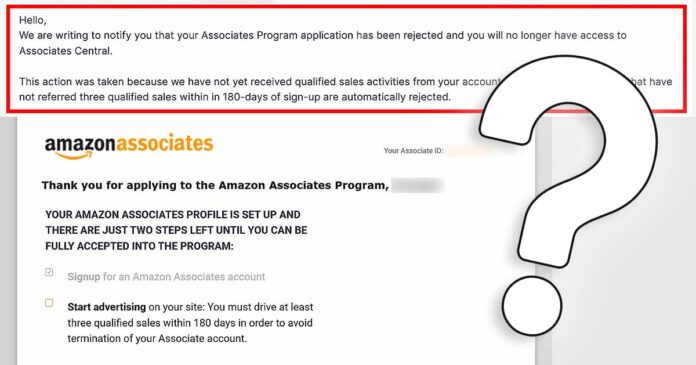The Amazon Affiliate Partner Program requires you to refer 3 sales in the first 180 days after you register. What happens if you don’t? Are there any consequences? Can you try again if you fail? As I’ve done that already for a few websites I own, I have answers to all your questions here!
What Happens If You Don’t Refer Any Sale for 180 Days?
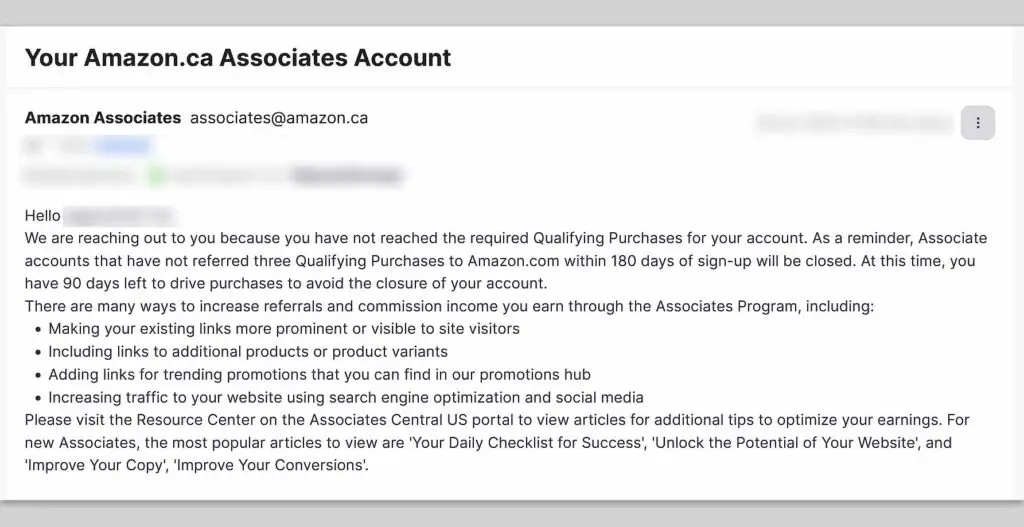
So, you’ve signed up for the Amazon Affiliate Program, probably excited to start earning some additional income from your website, blog or YouTube channel. But what if, despite your best efforts, you find yourself unable to refer any sales within the first 180 days?
The first email you’re going to receive, is one with a reminder that you haven’t met the sales quota 90 days before the end of the full 180-day period. You can see it on the image above.
On the image below you can find the email you’re probably somewhat afraid of receiving – the one which announces the closure of your account after 180 days have passed without you having referred 3 qualifying sales.
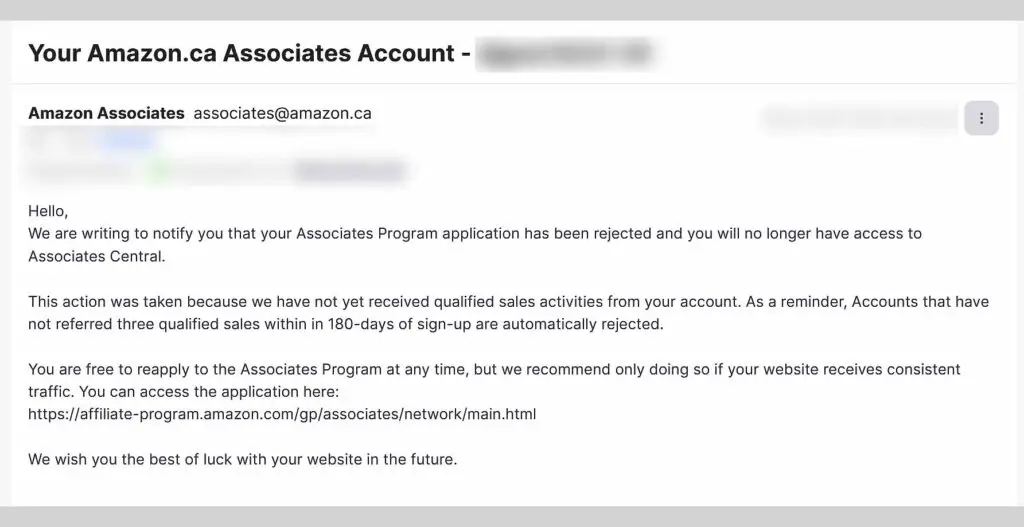
Yes. Sadly, if you’re not able to meet this quota, your application will be rejected, and you will lose access to your Associates Central portal, alongside with the access to your Amazon Affiliate account. This is also the case if you’ve only made 2 of the 3 required sales, so keep that in mind!
Can You Re-Apply If You Miss The Mark?
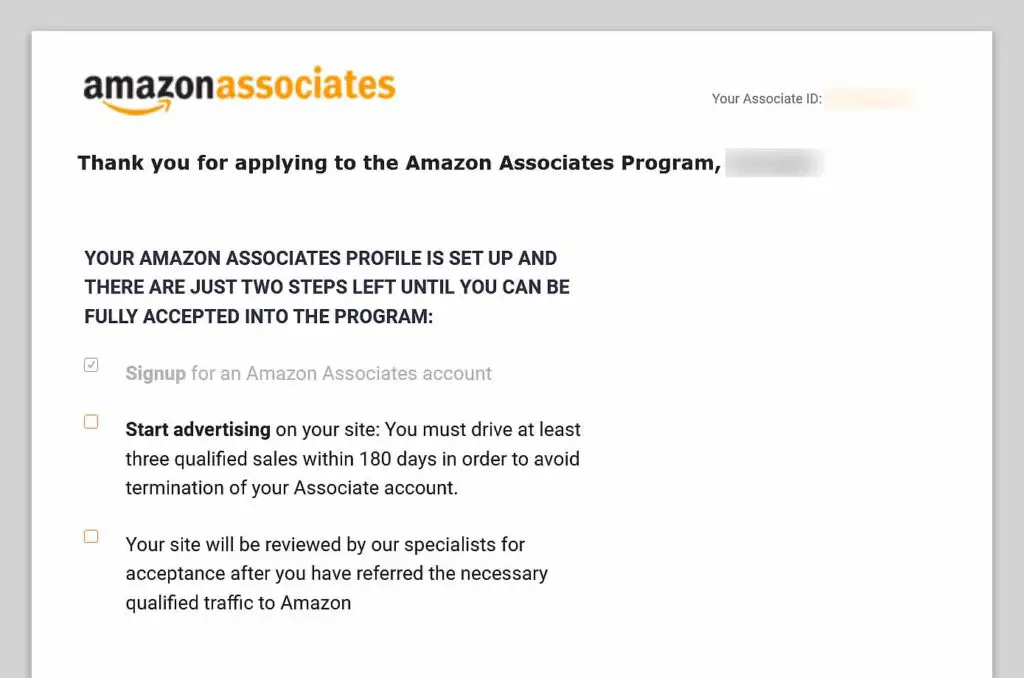
As you might have already seen on the email attached in the previous paragraph, you can, and you should reapply to the Associates program once your site gets sufficient targeted traffic and you’re sure that this time you can meet the required conditions without any trouble.
The rejection email also contains a link to the application, for your convenience. The only downside to this is that all the affiliate links you’ve generated using your closed account will now stop working, and will not transfer to the new account should you open one.
This means that you have to replace all the Amazon affiliate links on your site which were connected with your previous account, with new ones, generated on your newly open profile.
How To Refer Your First 3 Sales Fast – My Best Tips
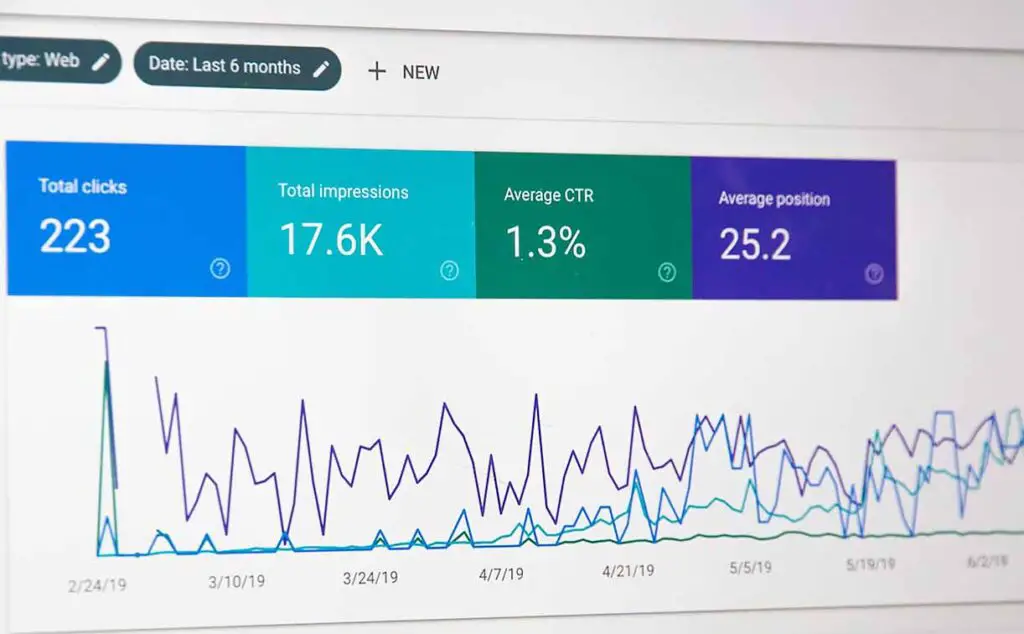
Trust me, I’ve been there, and I know the feeling of wanting to kickstart your affiliate journey as fast as possible. I’ve done so a while back, and have gotten my first few referred sales in a matter of a few weeks. Here are my best tips to help you achieve that goal quickly:
Keep In Mind Your Audience’s Needs
One of the most effective ways to drive sales is by effectively engaging with your audience writing promotional posts meant just for them. Create content that resonates with them, addresses their pain points, and provides valuable solutions. Whether it’s through blog posts, videos, or social media, make sure your content is compelling and relevant to your target audience and their specific needs. Once you have produced enough quality content, only then you can begin promoting it and building traffic. Market research is key!
Choose the Right Products To Promote
When selecting products to promote, think about what your audience is interested in and what they are likely to purchase. It’s best to focus on products that align with your niche and that you genuinely believe in. Authenticity goes a long way in building trust with your audience and driving sales. Moreover, try to think outside the “classic” top-10 product posts. This kind of content is known for being very hard to rank these days, especially for smaller websites with less topical authority in competitive niches.
Create Product Displays For Better CTR
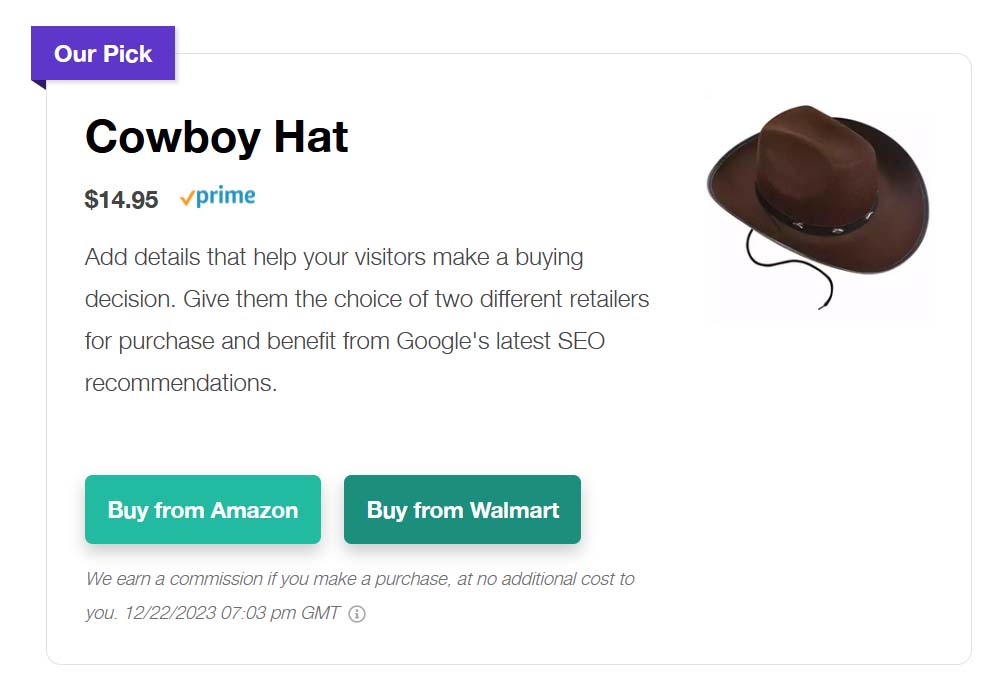
When it comes to boosting your Amazon affiliate sales, it’s very much important to go beyond simple text links in your blog posts and website content. Creating visually appealing product displays can significantly improve your click-through rates (CTR) and ultimately lead to more conversions.
One effective tool to achieve this is the Lasso plugin, which allows you to showcase products in a more engaging and interactive way on your website. By incorporating professional product displays into your content, you can capture the attention of your audience for longer and increase the likelihood of them making a purchase through your affiliate links. Remember, a well-curated product display can make all the difference in driving sales and maximizing your earnings as an Amazon associate.
Optimize Your Content
Optimizing your content for search engines can help attract more traffic to your site and increase your chances of making sales, however lately the “traditional” art of search-first SEO has changed quite a bit. Use relevant keywords, create compelling meta descriptions, and ensure your content is well-structured and easy to read, but first and foremost – write useful people-first content. And going beyond that, remember: your goal is not just to drive traffic to your site or posts, but to convert that traffic into sales. Think like the site visitor, and write your content with that in mind.
Monitor Your Performance
Keep track of your affiliate links’ performance to see what’s working and what’s not. Not doing that is one of the most common mistakes that beginner affiliate marketers do. Analyze your click-through rates, conversion rates, and earnings to identify areas for improvement. By continuously monitoring and optimizing your strategies, you can see which links/articles work and convert, and which do not. If you track your links from the very beginning, you can also see what your first sale was, and which page it came from. And this is very crucial info if you want to scale and promote your successful affiliate pages.
Limit Ads on Your Affiliate Pages
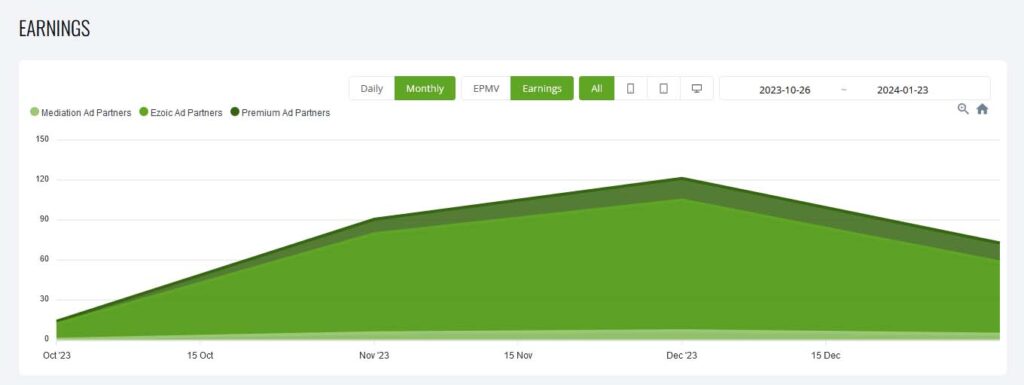
I’ll say that outright. On affiliate pages where I make use of free traffic (Pinterest, Bing, Google, etc.) I limit the number of displayed ads, and control their placements. On pages for which I run paid ad campaigns, I turn off the ads completely. There are two main reasons for that. First, is that if you’re making use of a programmatic ads supplier like Ezoic or Mediavine, the chances are that the contextual ads in your affiliate article will advertise very similar (or in some cases the very same) products that you’re attempting to sell to your readers. The second one is that a large amount of ads on an affiliate page is not only very distracting for a potential customer, but it also can make your article or blog post less trustworthy in the eyes of a site visitor.
Final Application Review & Site Requirements

After you’ve put in the work to make those first three sales and you have succeeded, it’s not the end yet! Now it’s time for the final application review. Amazon takes this step very seriously, ensuring that your site meets their standards for customer experience. They look for original content across all your provided platforms, from websites to social media pages. Thin pages or mass-generated content with little to no value for a real visitor won’t work out here. Remember, quality over quantity is key here.
Make sure your site is up to date and that it has at least a few categories with a few well-written articles in each of them. Also, remember not to include sites you’re not 100% sure that will pass the quality check in your affiliate site list. In general, although that is not a rule, if your site is eligible for AdSense monetization, you have a good chance of getting accepted into the Amazon Affiliate program. In addition to that, you should also refrain from applying with sites that do not meet the Amazon rules in terms of acceptable content. See the full list here.
So That’s It!
That’s about as far as I can guide you here! I hope you’ll be able not only to get accepted to the Amazon Affiliate Program, but also scale your sales to start making additional income from your websites and other media channels. If you have any questions, don’t hesitate to ask. Until next time!
You might also like: Can You Get Clicks & Impressions During Google Ads Bid Strategy Learning Phase?

